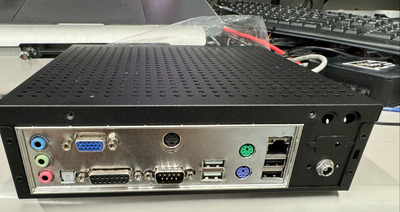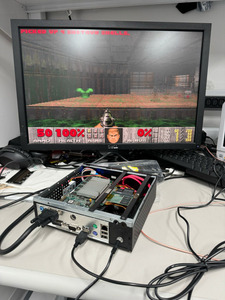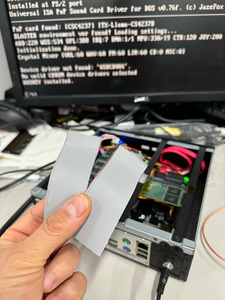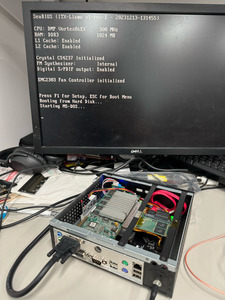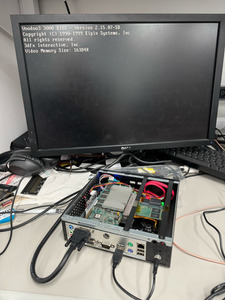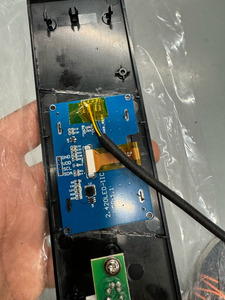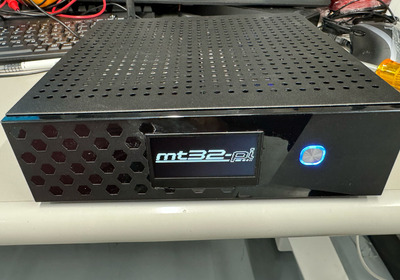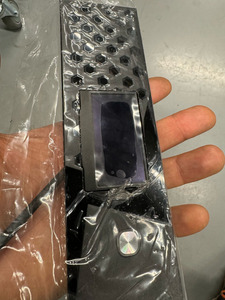Eivind wrote on 2024-05-09, 23:15:
snipe3687 wrote on 2024-05-08, 15:00:
possible to get the firmware for the ATTINY and RP2040 posted too?? PLEASE 😉
It's on github now! 😁
Awesome, thank you so much!
So last night I went through the entire board again. Checked the datasheet for the CS4237b, found all the pins and where they go on the board and verified, they all have continuity. After that I went through and reflowed every pin again, checked for continuity between the pins as well as poked them all with the fine tip leads of my meter to make sure nothing was loose. Still nothing at power on. After that I decided to bite the bullet and I removed the chip completely from the board, cleaned everything really well and then put a brand-new chip on the board. same process as before, soldered everything and checked all the pins really well, no continuity between any pins and they are all securely soldered, so I booted it up and STILL nothing!
I did power on the board with the chip removed to see if anything in the POST or BIOS changed because one thing I noticed before in the BIOS that the setting to enable the external synth module is disabled and greyed out. Same thing with the chip out of the board so that leads me to believe the BIOS is not reading the CS4237b to be able to toggle. I would assume you could do that even without an external synth since I don't have one and my understanding is it's just a chip select line that is being enabled. It also helped me verify that the "CS4237b initialized" message is a static string of text and doesn't actually tell me that anything is really initialized like the PWM fan controller does. (if I'm wrong let me know!)
Next, I decided to install windows 98 to see if the chip is detected there to see if maybe the codec is working but it wasn't detected at all.
I have to be missing something.
I noticed when I set the blaster variable: SET BLASTER=A220 I7 D1 P330 T4 and run CWDMIX.EXE I get this message:
Illegal function call in line 0 of module SBMIXER at address 0703:00F2
I did see this before with the other part too but didn't think much of it. Is this a problem with the chip or CWDMIX?
My next step was to remove items from the board that weren't required for the chip to be seen by the SOM. I removed the line driver for the S/PDIF and the op amp but again, no life. At this point I don't know what to check. I plan to go over all the passives later with my meter and verify they are reading the correct values. I was VERY religious about following the BOM during assembly and was checking each part off as I was installing them but maybe I goofed up. other than that, I also plan to disconnect any lines running to non-critical items like the line to the PI, the header for the wave table and external synth.
Is it possible it's stuck in reset somehow? I see the reset line goes to U2 which connects the reset line between the SOM, CS4237b and the PCIe to PCI bridge chip but I didn't think much of that since the bridge chip is working although, funny story, I had a passive on the bridge chip not quite soldered down and when I first powered the board it blew out the original bridge chip. it was getting 3.3v on the 1.15v line from U7. I'm wondering if it's possible that U2 is holding the RSTDRV line high keeping the chip from enabling. I'll have to check that with my scope. I noticed on the datasheet it says if the line is driven high, it will put the chip in low power mode so maybe that's my problem? I did scope all the address and data lines and saw activity so maybe that's not the case but who knows, maybe it should be sending and receiving data on the address/data lines in low power but then why wouldn't it be detected? IDK!
My other thought was to compare the address and data signals to the ones my TinyLlama v2 has since I know that one works. I tried the SOM from the TinyLlama v2 on the ITX since there's nothing in it that initializes the CS4237b but again...SAME THING...ugh.
any and all suggestions are VERY MUCH appreciated!
Also, Eivind, do you have gerbers for the OPL3 module somewhere? I'd love to build one of those too! I already bought the chips based on studying your images 😀
as always THANK YOU!
